Fish fed a diet with 5 percent Schizochytrium dietary oil grew twice as fast as fish fed plant oil or a mixture of plant and fish oil
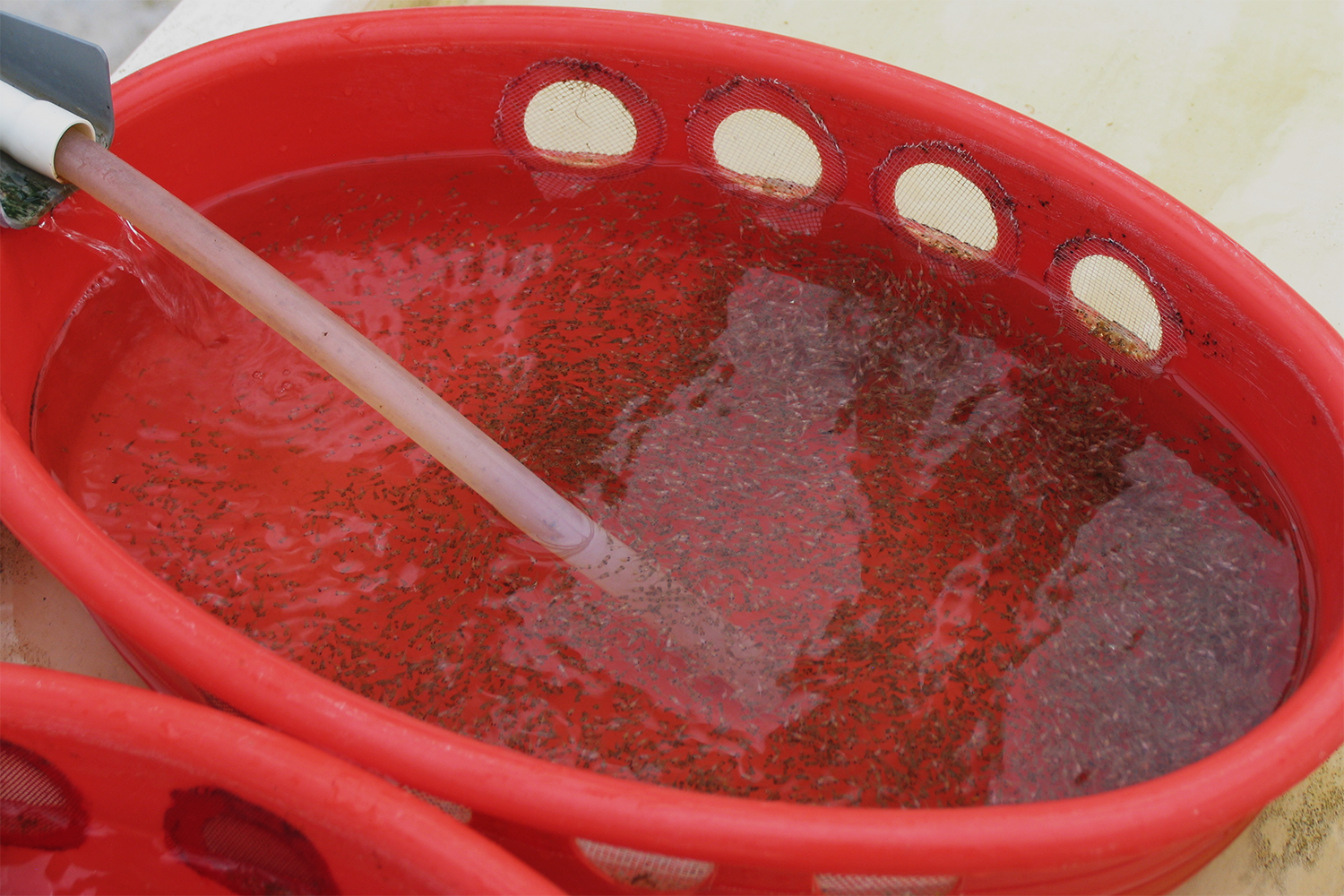
Nile tilapia (Oreochromis niloticus) – the second most widely farmed fish worldwide and the main source of fish food for millions of people, particularly in developing countries – are typically fed a high percentage of plant ingredients, which results in low contents of omega-3 fatty acids (FAs) like eicosapentaenoic (EPA) and docosahexaenoic (DHA). An adequate dietary intake of EPA and DHA is essential for the regulation of many metabolic pathways and overall health, so improving the nutritional value of Nile tilapia is a priority.
Omega-3 FAs present in aquafeeds are deposited in the fish fillet and are then transferred to human consumers, offering possibilities for improving the diet of millions of people through fish farming. To make tilapia more nutritious, aquafeeds can be enriched with fish oil, but this is costly. Fish oil is often replaced by plant oils, but these do not have the same omega-3 content or composition as fish oil and can have adverse effects on fish health.
An alternative to the use of fish oil in aquafeeds would be to use oil extracted from microalgae rich in omega-3s. Among those currently being cultivated, Schizochytrium sp. is the only one whose oil is commercially available for incorporation into fish diets. Its oil is rich in omega-3 FAs, and unlike other microalgae which require specific carbon sources to grow, Schizochytrium can thrive on agriculture byproducts and even wastewater from fish farming, which facilitates its culture. High production costs are the main factor limiting the uptake of microalgae in aquafeeds, but recent advances in algal biotechnology have made microalgae production more cost-effective.
This article – summarized from the original publication (C.G. de Leaniz. 2024. Effects of micro-algae dietary oil replacement on growth, omega-3 deposition and gut microbiome composition of Nile tilapia (Oreochromis niloticus). Aquaculture, Fish & Fisheries 4(3), June 2024 e164) – reports on a study that assessed the effects of varying the amount and sources of dietary oil (Schizochytrium, fish and plant) on omega−3 deposition, growth, survival and composition of the gut microbiome of Nile tilapia while keeping other dietary ingredients constant.
Study setup
The study was carried out at Swansea University (UK) using young tilapia from first feeding onwards, as this is the time when the fish microbiome is most plastic and most likely to be affected by changes in the diet and by bacterial colonization history. Three-day old, mixed-sex Nile tilapia from a certified supplier were stocked into eighteen 25-liter opaque plastic tanks (40 L × 31 W × 23 H cm), each containing 90 fish and assigned to six experimental diets in triplicate using a random number generator and connected to a recirculating aquaculture system. Mean initial size (total length) was 8.5 ± 0.72 mm; mean initial mass (wet weight) was 24 ± 4.4 mg. Stocking density was maintained at 3.6 fish per liter (<2.2 grams per liter) throughout the duration of the experiment, which is within the recommended values to maintain high welfare.
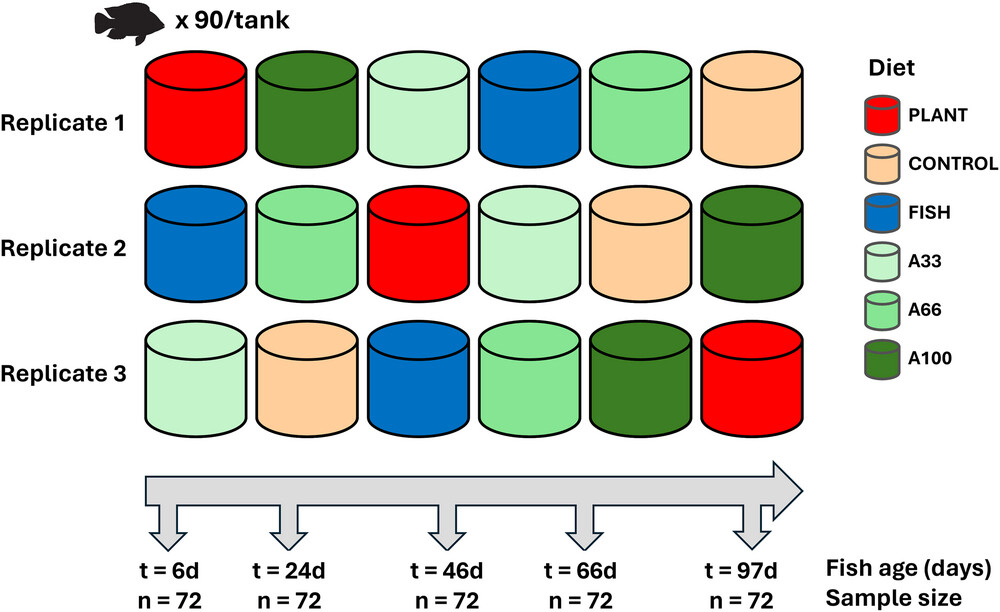
Six isonitrogenous (mean protein = 32 percent), isolipidic (mean lipid = 16 percent) and isocaloric diets (mean = 19.36 kJ per gram) were formulated considering the nutritional requirements for the species and in line with other algae feeding studies in tilapia. Protein sources were maintained constant and consisted of fishmeal, soybean meal and line seed meal, and the only variation was the contribution of fish oil, soya oil and Schizochytrium oil as the lipid sources. Fish were fed to satiation three times per day. Particle size was increased every three weeks to match fish growth, starting with 200 µm and increasing to 600, 800 and 1200 µm. Dietary composition was maintained constant over the three months of the study.
Four fish per tank (12 per dietary group) were humanely sacrificed and sampled at day 3, and then every ∼three weeks at days 21, 43, 63 and 94. Total sample size was n = 60 per diet (n = 360 in total). The whole gut of the fish was dissected and preserved, total length and weight were recorded for growth analysis, and Fulton’s condition factor (K) was calculated as a measure of body condition.
For detailed information on the experimental setup, diet formulation and animal husbandry; sample collection and analyses, refer to the original publication.
This marine microalga could be a more sustainable aquaculture feed ingredient – but there’s a catch
Results and discussion
Results show that the type of dietary oil consumed from first feeding through the first 3 months of development had a marked effect on the growth, omega-3 fillet content and composition of the gut microbiome of Nile tilapia. Tilapia raised on a diet where all the oil originated from the microalgae Schizochytrium grew twice as fast as fish fed with plant oil or a mixture of plant and fish oil, and as fast as fish raised on 100 percent fish oil or 33 percent algal oil.
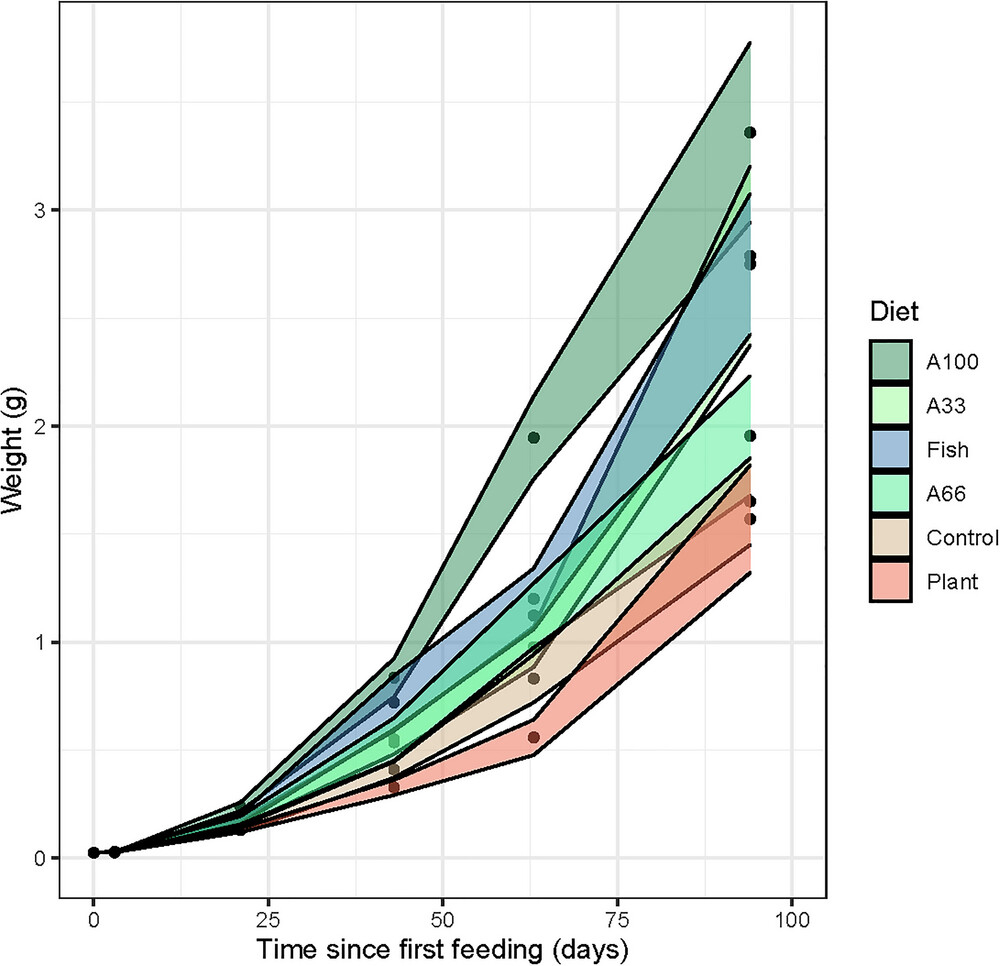
Several studies have shown improved growth of Nile tilapia fed whole-cell microalgae, but little is known about the growth benefits of using microalgae oil as a lipid source. In our study, Nile tilapia fed on 100 percent Schizochytrium oil replacement grew at a very high rate (specific growth rate, SGR = 5.20 percent/day) but direct comparisons with previous studies are probably unwarranted, as our fish were substantially smaller and would have grown at a faster rate.
No difference in survival was found between diets, which all showed high survival (mean = 85 percent) in line with values reported for commercial hatcheries of Nile tilapia. We cannot tell if the fish fed the 100 percent algal diet grew faster because they had better assimilation or because they had consumed more food. The fish were fed to satiation three times a day, and although we did not notice any obvious difference in feeding activity, it is possible that a Schizochytrium-rich diet may have had better palatability for a facultative herbivorous fish like Nile tilapia.
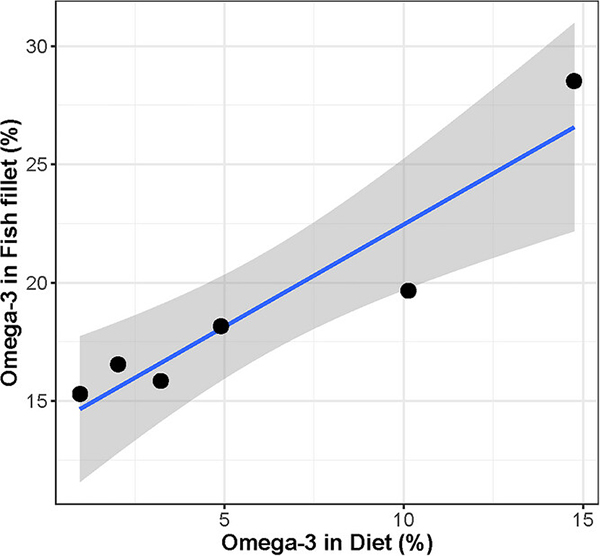
A strong positive relation was found between omega-3 content in the diet and the omega-3 content of the fish fillet. Thus, tilapia fed a diet with 100 percent algal oil had almost twice as much omega-3 in the fat of the fish fillet than fish fed plant oil. A 1 percent increase in omega-3 in the diet resulted in a ∼0.9 percent increase in omega-3 in the fish fillet, suggesting that there is considerable scope for making Nile tilapia more nutritious using microalgae, as indicated in other studies.
The early rearing environment can have a marked effect on the gut microbiome of Nile tilapia. By conducting our study from first feeding, we were able to reveal the role of diet in the early development of the gut microbiome without the confounding effects of variation in microbial colonization history. Our results show that the microbiome of Nile tilapia changes rapidly over the first months of life, becoming less diverse as fish develop. Three weeks after first feeding, the gut microbiome of Nile tilapia was dominated by Enterobacteriaceae, Aeromonas spp. and Pseudomonas spp., as reported previously for several species, including Nile tilapia.
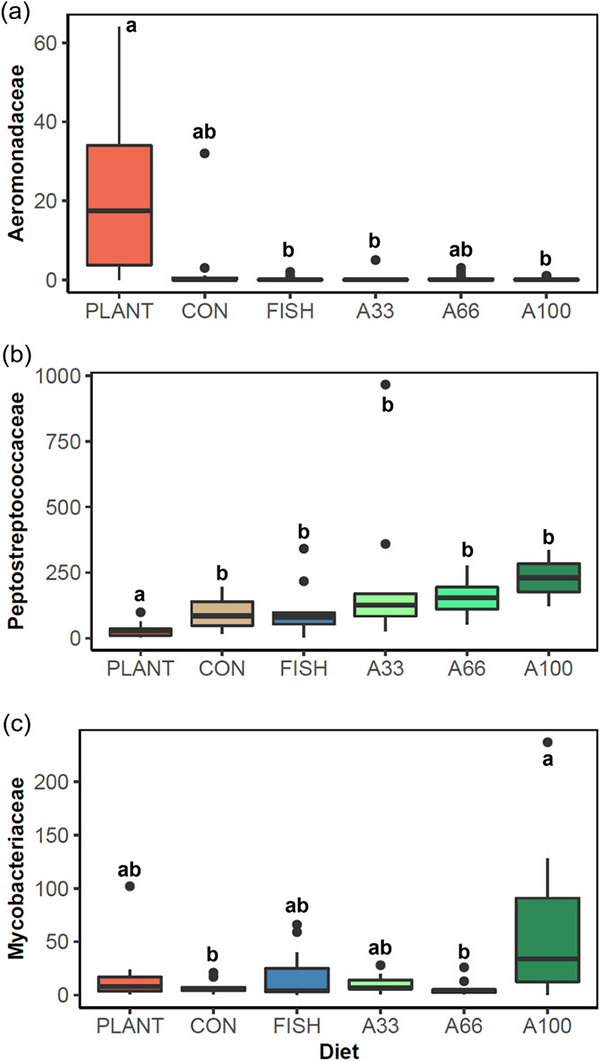
As the fish develop and begin to feed, the gut microbiome becomes less diverse and stabilizes. Consistent with this, we observed a reduction in diversity and richness, and a significant shift in community composition towards a gut microbiome dominated by the families Fusobacteriaceae, Peptostreptococcaceae and Enterobacteriaceae three months after the first feeding. A high abundance of Fusobacteriaceae in the gut microbiome of juvenile fish has been reported previously for Nile tilapia and other warmwater fish inhabiting both freshwater and brackish environments, and it has been proposed that this may form the core microbiome of non-carnivorous fish. Fusobacteria are able to degrade complex dietary fibers through anaerobic fermentation and may confer benefits to omnivorous and herbivorous hosts.
The family Aeromonadaceae not only dominates the microbiota of many freshwater fish) but also includes a large number of opportunistically pathogenic species. We observed a marked increase in the relative abundance of Aeromonas spp. and the family Aeromonadaceae in tilapia fed the 100 percent plant (soya) oil, which is consistent with a stress response.
Another bacterial family that differed significantly among fish fed on different diets was Mycobacteriaceae, a family common in the microbiota of many fish, including tilapia. It was most abundant in fish fed the 100 percent microalgal oil diet, but whether this confers any benefits is uncertain. The mechanisms that promote the growth of some bacteria in the fish gut and the suppression of others are not clear but understanding responses to dietary change at species (or even strain) level are typically necessary to predict effects on gut health.
Perspectives
Results of this study show that a diet rich in vegetable oil, particularly in linoleic acid (n-6), was associated with a decrease in decrease in Peptostreptococcaceae and an increase in Aeromonadaceae, commonly associated with intestinal inflammation in the fish gut, whereas a Schizochytrium diet rich in omega-3s and a high DHA:EPA ratio promoted the proliferation of Mycobacteriaceae and resulted in faster growth and higher omega-3 deposition in the fish fillet.
Overall, results indicate that Schizochytrium oil could serve as a replacement of fish and plant oil and enhance growth. Although the study did not grow fish to market size, it confirms the dietary omega-3 benefits of using microalgae and suggests that Schizochytrium oil could be used to produce more nutritious and sustainable Nile tilapia without impacting on gut health.
Now that you've reached the end of the article ...
… please consider supporting GSA’s mission to advance responsible seafood practices through education, advocacy and third-party assurances. The Advocate aims to document the evolution of responsible seafood practices and share the expansive knowledge of our vast network of contributors.
By becoming a Global Seafood Alliance member, you’re ensuring that all of the pre-competitive work we do through member benefits, resources and events can continue. Individual membership costs just $50 a year.
Not a GSA member? Join us.
Author
-
Dr. Carlos García de Leaniz
Corresponding author
Centre for Sustainable Aquatic Research (CSAR), Department of BioSciences, College of Science, Swansea University, Singleton Park, Swansea, UK
Tagged With
Related Posts
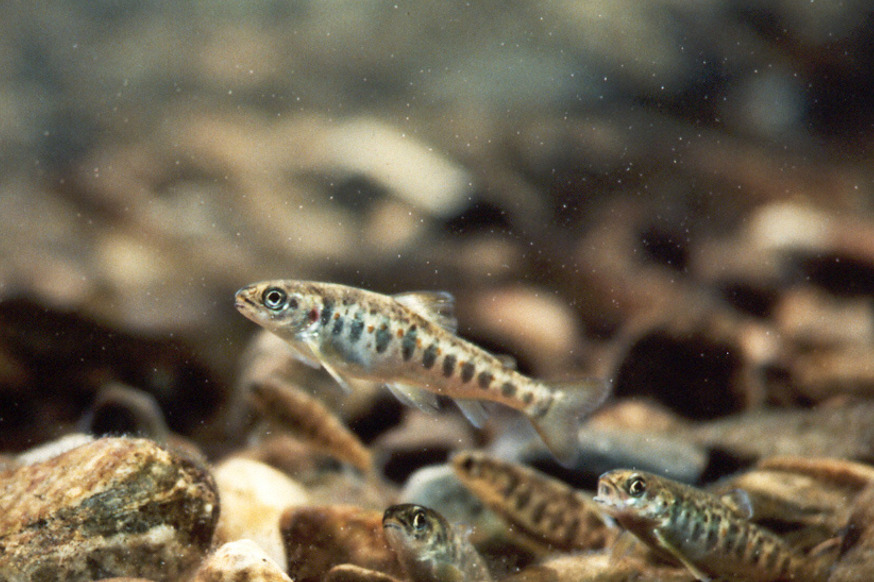
Aquafeeds
Assessment of microalgal biomass as a fish oil replacement in Atlantic salmon diets
The inclusion of a microalgal biomass in salmon feeds shows potential use throughout the whole production cycle from parr to harvest size.
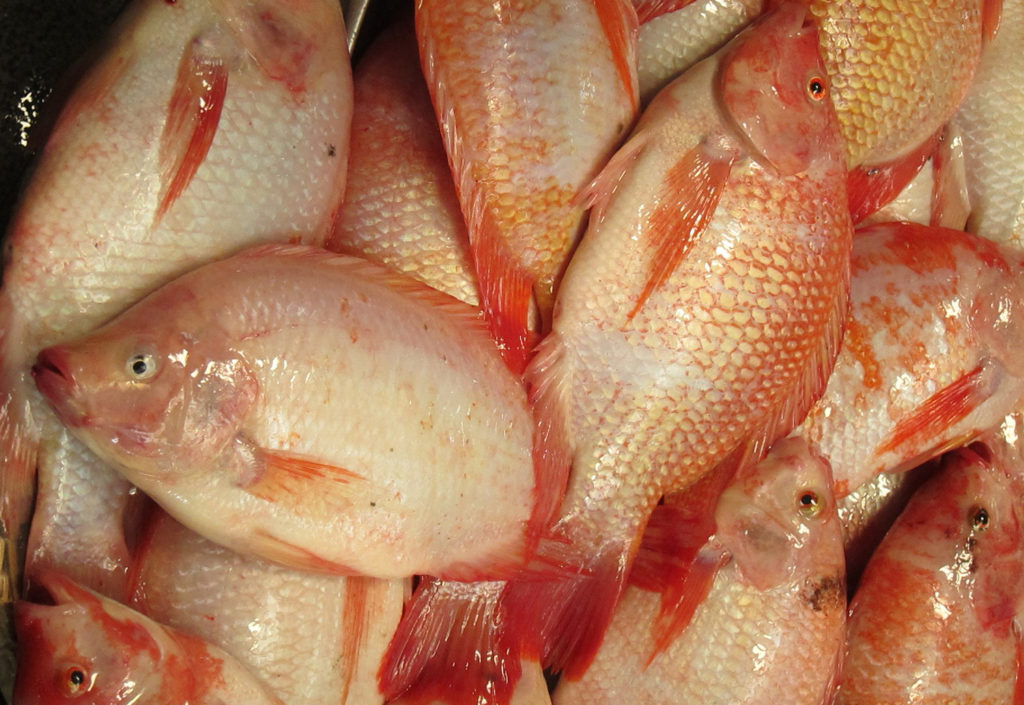
Aquafeeds
Comparing microalgae-blend diets to reference diet for Nile tilapia
Nutritional study with Nile tilapia compared three microalgal diets to a reference diet containing fishmeal and fish oil levels found in commercial feed.
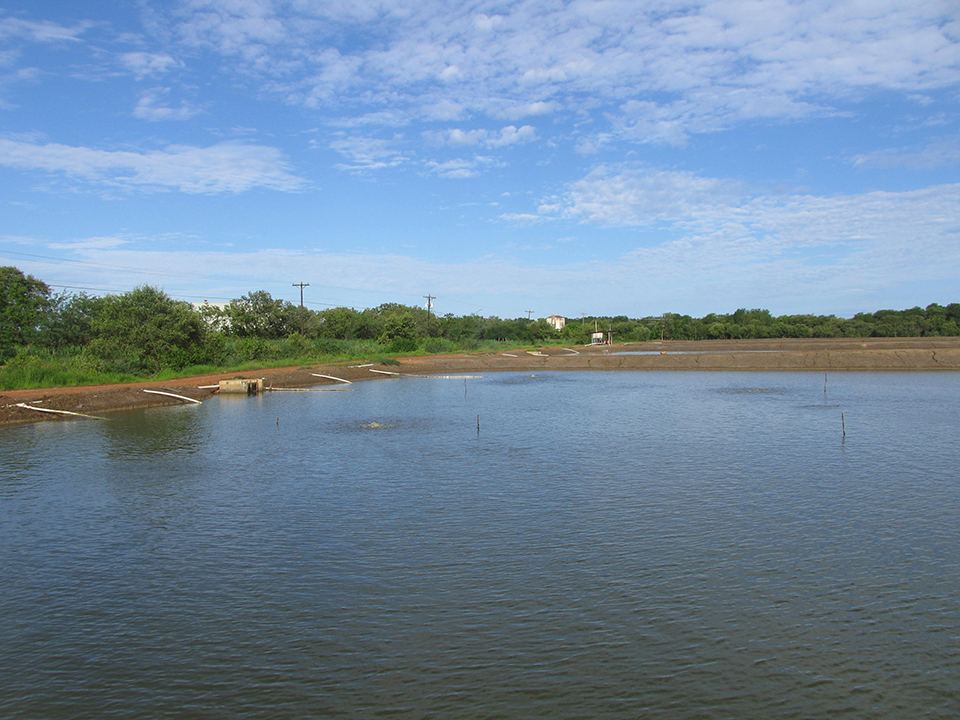
Responsibility
Phytoplankton in aquaculture ponds: Friend or foe?
A vigorous phytoplankton bloom will support a healthy benthic community and will contribute significantly to stabilising and maintaining adequate pond water and bottom quality.
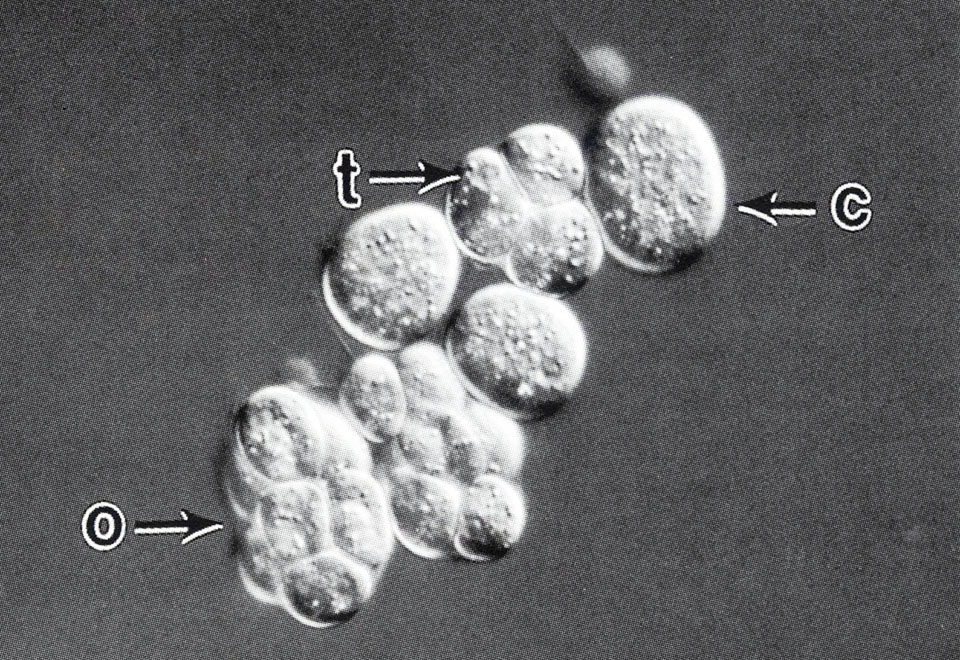
Aquafeeds
Thraustochytrids: Potential DHA source for marine fish nutrition
In the ongoing challenge of developing larval feeds for aquaculture, thraustochytrids – nonphotosynthetic, heterotrophic marine organisms – have potential as a source of fatty acids.



